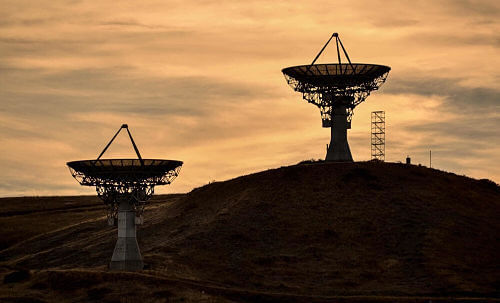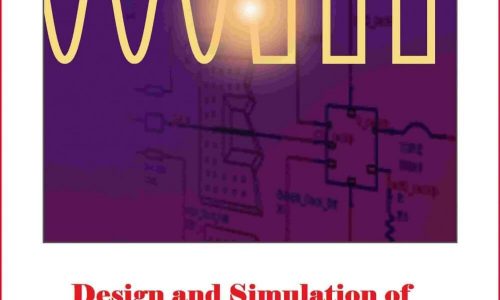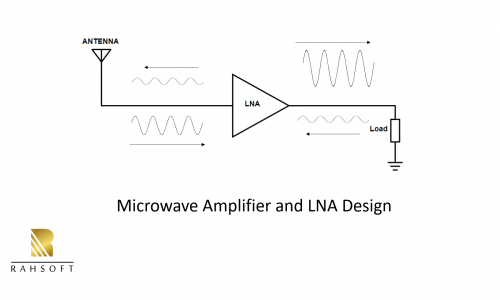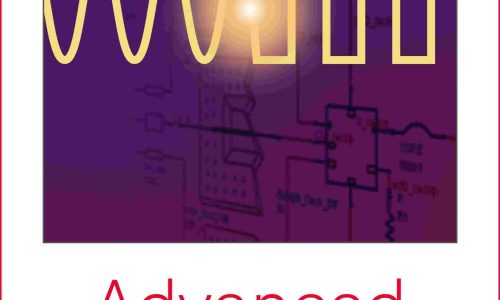Course Title: RF System Design of Receivers, Transmitters & Transceivers – RAHRF409
Course Description:
Unlock the secrets of RF wireless systems, explore transmitter, receiver, and transceiver architectures, and gain mastery over their constituent blocks and functions. Welcome to RAHRF409, the complete course for designing RF receivers, transmitters, and transceivers.
In this comprehensive course, we delve deep into the intricacies of designing RF systems, focusing on the critical components and their unique characteristics. With a blend of theoretical insights, practical examples, and Advanced Design System (ADS) simulations, you will gain the knowledge and skills required to craft high-performance RF systems.
Prerequisites:
- RAHRF101 and RAHRF201 or a solid understanding of RF fundamentals.
Course Highlights:
- Receiver Design: Begin your journey by understanding the principles of RF receivers. Explore concepts such as down conversion, band, and channel selection, and gain insights into real-world examples like the GSM band. Dive into the critical topic of image rejection and discover the advantages and drawbacks of dual conversion receivers.
- Zero IF and Direct Conversion Receivers: Explore advanced receiver architectures, including zero intermediate frequency (IF) and direct conversion designs. Learn to overcome challenges such as LO leakage, DC offset, even-order distortion, and flicker noise. Master techniques for mitigating I/Q mismatch and implementing 90-degree phase shifts.
- Transmitter Design: Transition to the world of RF transmitters and uncover the intricacies of up-conversion. Dive into examples of analog and direct conversion transmitters. Grasp key transmitter design challenges, including carrier leakage, linearity, and oscillator pulling, and discover effective solutions to these issues.
- Transceiver Architectures: Explore the fascinating realm of RF transceivers, from Time Division Duplexing (TDD) to Frequency Division Duplexing (FDD). Understand the impact of I/Q mismatch through practical examples and delve into a detailed case study highlighting the drawbacks of direct conversion in receivers.
By the end of RAHRF409, you will have gained a profound understanding of RF systems’ design principles and their practical applications. This course is an essential stepping stone for RF design engineers, electrical engineers, communication engineers, hardware engineers, radio frequency enthusiasts, RFIC engineers, semiconductor professionals, wireless design engineers, and anyone looking to master the art of RF system design.
Please note that this course has prerequisites (RAHRF101 and RAHRF201) and is considered a core course in the Rahsoft RF Certificate program.
Who Should Enroll:
- RF Design Engineers
- Electrical Engineering Professionals
- Communication Engineers
- Hardware Engineers
- Radio Frequency Enthusiasts
- RFIC Engineers
- Semiconductor Professionals
- Wireless Design Engineers
Radio Frequency Certificate Courses Available and Prerequisites
Course Features
- Lectures 62
- Quiz 0
- Duration 8 hours
- Skill level All levels
- Language English
- Students 1101
- Certificate Yes
- Assessments Yes
Curriculum
- 4 Sections
- 62 Lessons
- 900 Weeks
- IntroductionINTRODUCTION7
- ReceiverIn this section you will be introduced to different receiver structures and downconversion methods. Each architecture is explained in details with figures and animations. Advantages and drawbacks of each downconversion approach is explained and solutions are provided for some problems.40
- 2.13.2.1 Receiver and Down Conversion3 Minutes
- 2.23.2.2 Band and Channel7 Minutes
- 2.33.2.3 GSM Band1 Minute
- 2.43.2.4 Down Converison by mixing7 Minutes
- 2.53.2.5 Summary 13 Minutes
- 2.63.2.6 Heterodyne Receivers7 Minutes
- 2.73.2.7 Heterodyne Receiver simulation7 Minutes
- 2.83.2.8 Image Problem12 Minutes
- 2.93.2.9 Removing Image9 Minutes
- 2.103.2.10 Image rejection Vs Channel Selection6 Minutes
- 2.113.2.11 Dual Conversion7 Minutes
- 2.123.2.12 Summary 26 Minutes
- 2.133.2.13 Dual Conversion Rx features10 Minutes
- 2.143.2.14 Dual Conversion Rx Pros and Cons12 Minutes
- 2.153.2.15 Secondary Image and Zero IF9 Minutes
- 2.163.2.16 Zero Second IF Summary3 Minutes
- 2.173.2.17 Quadrature signals11 Minutes
- 2.183.2.18 Quadrature Down conversion9 Minutes
- 2.193.2.19 Zero IF Heterodyne Rx7 Minutes
- 2.203.2.20 Sliding IF receivers15 Minutes
- 2.213.2.21 Sliding IF receivers Example 17 Minutes
- 2.223.2.22 Sliding IF receivers Example 210 Minutes
- 2.233.2.23 Direct Conversion receivers7 Minutes
- 2.243.2.24 FSK Receiver10 Minutes
- 2.253.2.26 Drawbacks of Direct Conversion Recievers – DC Offset6 Minutes
- 2.263.2.27 Solving DC Offset15 Minutes
- 2.273.2.25 Drawbacks of Direct Conversion Receivers – LO Leakage10 Minutes
- 2.283.2.29 Drawbacks of Direct Conversion Receivers – Flicker Noise10 Minutes
- 2.293.2.30 Drawbacks of Direct Conversion receivers – Flicker Noise Example 14 Minutes
- 2.303.2.28 Drawbacks of Direct Conversion Receivers – Even Order Distortion3 Minutes
- 2.313.2.31 Drawbacks of Direct Conversion receivers – Flicker Noise Example 28 Minutes
- 2.323.2.32 I/Q mismatch13 Minutes
- 2.333.2.33 90 degree phase shift6 Minutes
- 2.343.2.34 Implementing 90 degree phase shift18 Minutes
- 2.353.2.36 Hartely Receiver 110 Minutes
- 2.363.2.35 Image Reject Receivers11 Minutes
- 2.373.2.37 RC-CR Network7 Minutes
- 2.383.2.38 Hartely Receiver 211 Minutes
- 2.393.2.39 Dual Band Receiver Example8 Minutes
- 2.403.2.40 Low IF Receivers10 Minutes
- TransmitterThis section concentrates on different Transmitter structures and upconversion methods. Each architecture is explained in details with figures and exmples. Advantages and drawbacks of each method approach is explained and solutions are provided for some problems.10
- 3.13.3.1 Up Conversion and Introduction to Transmitters9 Minutes
- 3.23.3.2 Analog Transmitter Examples5 Minutes
- 3.33.3.3 Direct Conversion Transmitters8 Minutes
- 3.43.3.4 Transmitter Design Challenges8 Minutes
- 3.53.3.5 Effect of I/Q mismatch example8 Minutes
- 3.63.3.6 Carrier Leakage9 Minutes
- 3.73.3.7 Transmitter Linearity8 Minutes
- 3.83.3.8 Oscillator Pulling7 Minutes
- 3.93.3.9 Solution for Oscillator Pulling18 Minutes
- 3.103.3.10 Heterodyne Tx14 Minutes
- Transciever5
- 4.13.4.1 Introduction to Transceiver4 Minutes
- 4.23.4.2 Time Division Duplexing (TDD)10 Minutes
- 4.33.4.3 Frequency Division Duplexing (FDD)8 Minutes
- 4.43.4.4 Time Division Duplexing VS Frequency Division Duplexing (FDD VS TDD)8 Minutes
- 4.53.4.5 Transceiver Example, Drawbacks of Direct Conversion in RX5 Minutes







